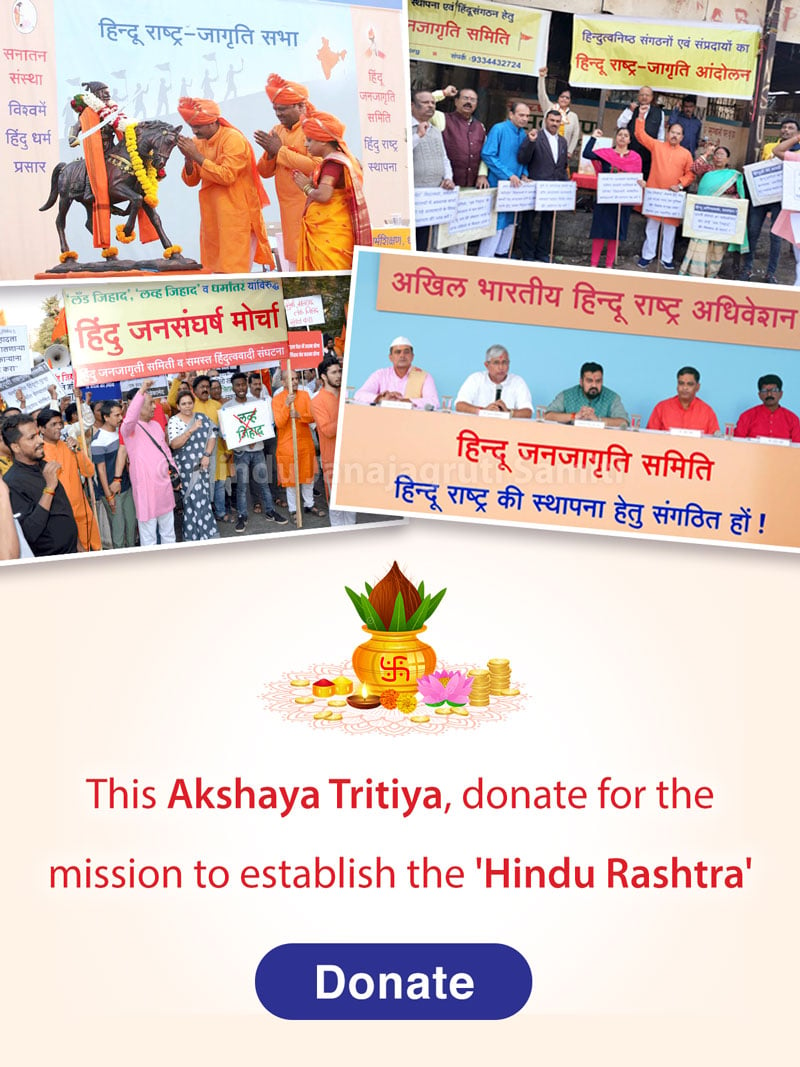By Shri. V. Sundaram, Retired IAS officer
In these days of Science and Technology, we tend to underestimate the sacred power of language. When the power of language to create and discover life is recognised, language becomes sacred.
In ancient times, language was held in sacred regard. Nowhere was this more so than in ancient India. Language in ancient India was viewed as a master tool which man had shaped for himself and which in its turn shaped the human mind.
It is evident that the ancient scientists of language in Vedic India who had mastered the Sanskrit language were acutely aware of the function of language as a tool for exploring and understanding life. Their intention to discover truth was so total and all consuming that in the process of using language with greater and greater vigour, they discovered perhaps the most perfect tool for fulfilling such a search that the world has ever known – the Sanskrit language.
Justly it is called ‘Sanskrit’. The very name ‘Sanskrit’ means ‘Language brought to formal perfection’. Professor Frederich Sehlegal, the great German Sanskrit Scholar who established the first Chair of Indology in Germany at Hanmoben, paid this tribute to the beauty and glory of Sanskrit language in the 19th century: ‘Sanskrit means perfect, finished. Sanskrit combines these various qualities possessed separately by other tongues: Grecian copiousness, deep-tone Roman force, the divine afflatus characterising the Hebrew tongues. Judged by an organic standard of the elements of language, Sanskrit excels in grammatical structure and is indeed the most perfectly developed of all idioms, not excepting Greek and Latin.
Adbul Kalam
T V Rajeshwar: Governor of UP
What was proclaimed with solemn authority in the Vedic Age by the Vedic saints, sages and seers more than 2,000 years ago and by Professor Frederich Sehlegal, Max Mueller and others in the 19th century, has been recently validated and confirmed by the astounding discovery made by the NASA Research Centre in USA: NASA, the most advanced research centre in the world for cutting-edge technology, has discovered that ‘Sanskrit’, the world’s oldest spiritual language, is the only unambiguous spoken language on the planet and is best suited for research in the field of ‘Artificial Intelligence’.
Let me now move over from the world of the sublime, the beautiful and the truthful to the sordid and ridiculous India of today. In many of the States in India we have Congress-nominated buffoons who are Governors. I am not for a moment suggesting that all buffoons are Governors or all Governors are buffoons. Such outlandish, by no means irrelevant or irreverent, thoughts came to my fragile mind when I read about the recent gubernatorial gibberish dished out by the Governor of Uttar Pradesh T V Rajeshwar in his official capacity as Chancellor of Sampurnanand Sanskrit University at a convocation function organised by that university. He declared ‘ Sanskrit learning is worthless in this age of science and technology. Learning Sanskrit is going back to bullock cart age when man is walking on the moon. Sanskrit is no longer the language of God. The knowledge of English and science is essential in this age for a bright career. I would take a lead for bringing about amendment in the State universities regulation for compulsory education of English. I would exhort all Sanskrit students to come out of the age-old confines of the language and look forward to learning modern things for development. Even Greek and Latin languages have been taken out of the syllabus of western universities while Sanskrit is being taught in most Indian schools even today. Languages like Sanskrit were promoted by the British to divide and rule the country.’
The gubernatorial nonsense – foolish remarks against Sanskrit and Sanskrit learning – proclaimed with pseudo-secular gusto by the Governor of Uttar Pradesh T V Rajeshwar shocked the students and teachers who were present during the Convocation address. The agitated students started shouting slogans against the Governor and his remarks and the Governor had to leave the place unceremoniously under security cover. Protesting against his remarks against Sanskrit learning, the students not only threw chairs and shoes at the convocation venue, but also turned violent, indulging in brick-batting at the main gate targeting the motorcade.
Not in Sampurnanand Sanskrit University alone, but elsewhere also the Governor had made similar comments against the Sanskrit language. Sometime back he had called upon students at the convocation at Mahatma Gandhi Kashi Vidyapeeth (MGKV) to rise above the Vedic studies in this age of modern science to ensure their place and position in modern-day metros. On that occasion, he spoke like a Bollywood Film Star when he said: Aj zamana badal raha hai. Sirf Vedic studies se aap log aage nahin badh sakate hain. He had said that students should move ahead with the time, leaving out-dated traditions behind. On that occasion also the whole function ended unceremoniously with students becoming restless and hurling chairs and shoes on the dais. No other civilised Chancellor in any other University in the world would have gone out of his way to hurt and wound the feelings, sentiments and susceptibilities of students who had chosen to pursue a particular academic programme of their own volition – that too on the most important day for them, the day of their convocation.
In this context, I have no doubt that the UP Governor would be shocked to know that Israel has invited 300 Hindu pandits to undertake collective chanting (Samuhik Namajap) for the protection of Israel. We only have to compare Israeli Government that tries every possible alternative with an open mind for National Security, with the pseudo-secular Nidharmi Bharat Sarkaar and their representative in Lucknow who ignore the treasures of traditional knowledge hidden within our own land!
To quote the apt words of N Mohan in this context: ‘A man studies a language not for money alone but for the love of a language. Now the question arises – what is the use of studying Hindi? Whether studying Hindi will fetch a salary of Rs 2-4 lakh? Can we replace Hindi with English, as our national language? By putting his foot into the mouth, Rajeshwar has proved that he is not fit to continue as Governor…’
Sampurnanand Sanskrit University was founded on 22 March, 1958 by the then Chief Minister Dr. Sampurnanand and Education Minister Pundit Kamlapati Tripathi at Varanasi, the oldest cultural city of India, with the name of ‘Varanaseya Snskrit Vishwavidyalaya’.
Dr A N Jha was the first Vice- Chancellor. This University was renamed as Sampurnanand Sanskrit University on 16 December 1974.
The university has since been proceeding along the set path of the programme while trying to achieve its goal. If its former shape Government Sanskrit College is included it has an excellent history of about 205 years. The nucleus for this university was created in 1791 when Governor General of India Lord Cornwalis accepted the proposal of Sir Jonathan Duncan, the English resident at Benares, for the establishment of a Sanskrit College at Benares. Pundit Kashinath was its first teacher and Acharya.
Systematic arrangements were made for the teaching of subjects such as Veda, Vedanta, Purana, Ayurveda, Sahitya, Astrology, Theology, Mimamsa, Nyaya etc. In 1844, J Muir, ICS, was made its first principal. Later, Dr J R Valentine established the tradition and spirit of a comparative study of oriental and occidental classics in the Sanskrit College and specific Sanskrit texts were translated into English in order to achieve this goal. Dr Valentine established an Anglo-Sanskrit Department with this end in view.
In 1861, Dr R T H Grifith was appointed as principal. He was the first scholar who translated the Valmiki Ramayan into English verses. During his tenure, the publication of ‘The Pandit’ ‘Kashi Vidya Sudhanidhi’ was launched which contained translations of many rare Sanskrit texts. The publication of this magazine continued till 1916.
During the principalship of Dr Ganga Nath Jha (1918-1923), the publication of Saraswati Bhavana Garnthamala and Saraswati Bhavana Studies was started and specific Sanskrit texts based on intensive research were published which marked a remarkable approach in the direction of study and dissemination of knowledge inherent in Sanskrit texts.
Mahamahopadhyaya Pt. Gopinath Kaviraj (principal 1923-1937) contributed significantly through translation and publication of specific texts as well as cataloguing of manuscripts.
What shocks me is that the Uttar Pradesh Governor has shown scant regard for the views of the President of India expressed at the Guru Raghavendraswamy Ashram, Mantralayam on 1 February, 2007, barely 10 days before the Governor’s outburst. The President stated:
…Sanskrit is a beautiful language. It has enriched our society from time immemorial. Today many nations are trying to research Sanskrit writings which are there in our ancient scriptures. I understand that there is a wealth of knowledge available in Sanskrit which scientists and technologists are finding today. There is a need to carry out research on our Vedas, particularly Atharvana Veda, for eliciting valuable information in science and technology relating to medicine, flight sciences, material sciences and many other related fields. Cryptology is another area where Sanskrit language is liberally used.
Moral of the story:
I am not happy if you are already aware of the fact that I am a panoplied clown. At any rate you cannot deny my gubernatorial prerogative to proclaim it myself again and again, for ever and ever!
(The writer is a retired IAS officer)
e-mail the writer at [email protected]
Ref : http://newstodaynet.com/2007sud/feb07/150207.htm

 Mizoram: EC accepts Christians’ demand to defer counting on Sunday, but what if Hindus had made a similar demand?
Mizoram: EC accepts Christians’ demand to defer counting on Sunday, but what if Hindus had made a similar demand? Sign Petition : Immediately repeal the draconian and unconstitutional ‘The Waqf Act, 1995’
Sign Petition : Immediately repeal the draconian and unconstitutional ‘The Waqf Act, 1995’ Shriram : Sri Lanka’s saviour
Shriram : Sri Lanka’s saviour Why it is so cool to malign Hindu gods and goddesses, but it may not be that easy now
Why it is so cool to malign Hindu gods and goddesses, but it may not be that easy now Shocking Truth of Taj Mahal exposed by Late Pujya P. N. Oak
Shocking Truth of Taj Mahal exposed by Late Pujya P. N. Oak How are Hindus treated in states where they are in a minority?
How are Hindus treated in states where they are in a minority?